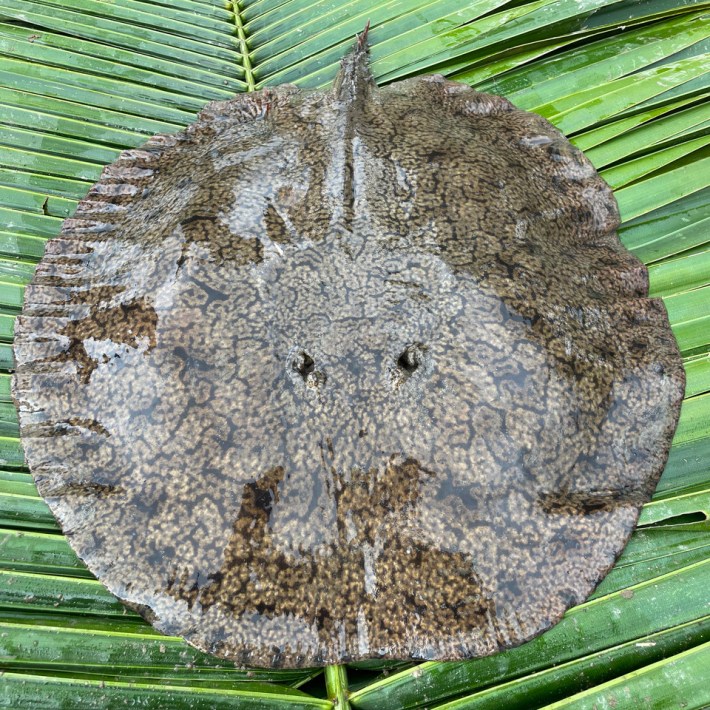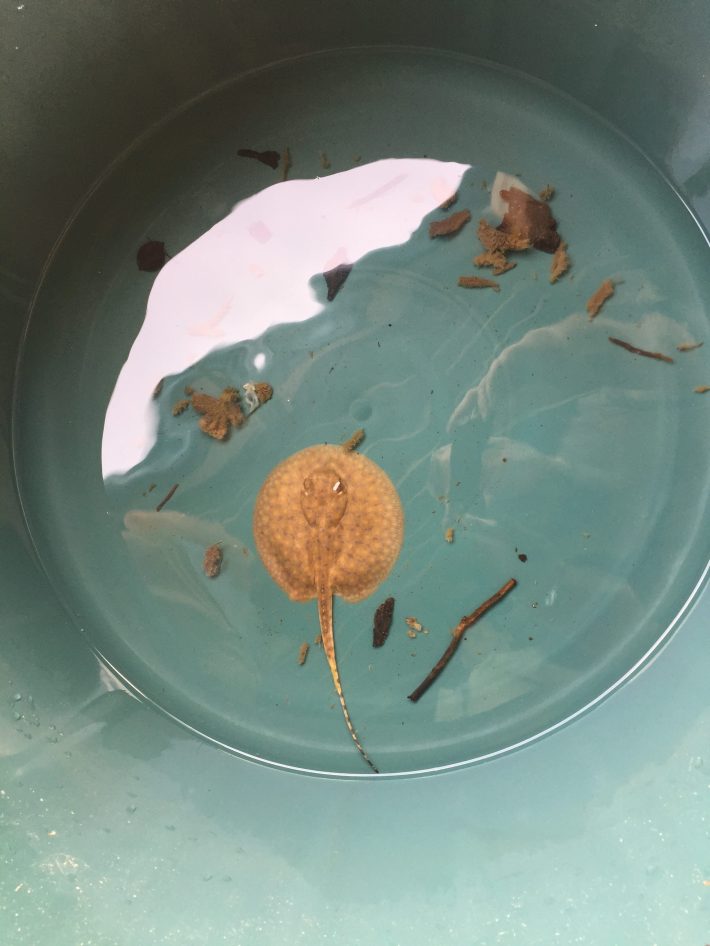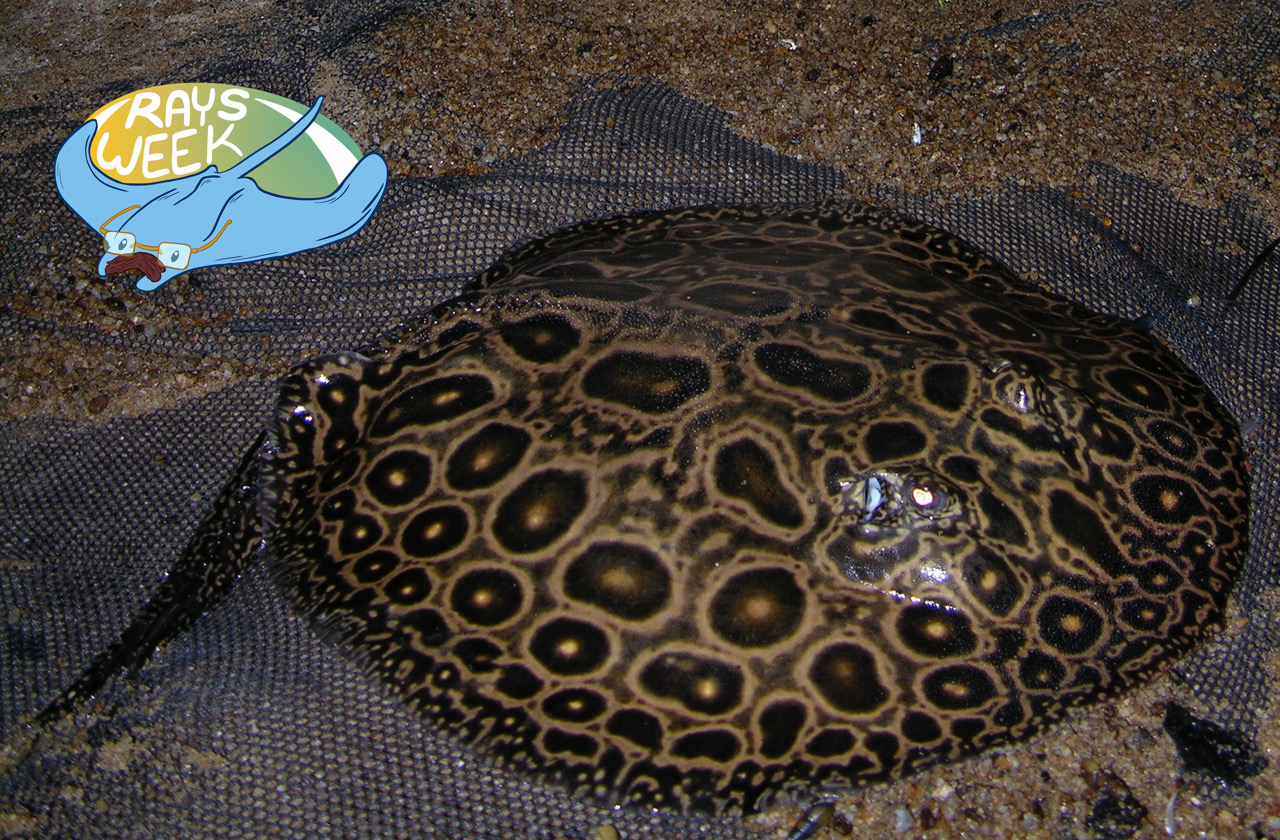To the casual observer, the rivers of the Amazon rainforest could easily be mistaken for ocean. South America's waters teem with stingrays, anchovies, pufferfish and needlefish—species that first originated in the sea and, consequently, might seem out of place in freshwater. There are even toothy, smiling dolphins that pink as they age. But all these species have fully adapted to life in these rivers, whose waters range from clear to milky brown.
The Amazon today has just a few species of pufferfish and several subspecies of Amazon river dolphin. But there are 38 species of neotropical freshwater stingrays, which is, frankly, an extraordinary diversity of the flat and flappy fish. They all belong to the subfamily Potamotrygoninae, and they swim in almost every major river basin in South America. And they take on an array of appearances and body types. Tiny spots and marbled swirls. Long, snaking stingers and short stubby ones. The tiniest of the river stingrays, Potamotrygon wallacei, grows about a foot long. One of the largest, the short-tailed river stingray Potamotrygon brachyura, can grow up to five feet long and weigh nearly 500 pounds. For João Pedro Fontenelle, an evolutionary biologist at the the Institute of Forestry and Conservation at the University of Toronto in Canada, this raises the important question: "What happened there?"

Fontenelle has been investigating the dizzying diversity of South America's freshwater rays since he was a master's student in Brazil. Scientists had long assumed that the freshwater stingrays invaded South America via the Caribbean, but were far less sure about when this happened and how the fishes manage to disperse so widely throughout the continent and evolve into so many distinct species. In two recent papers, Fontenelle and colleagues offer new clues into why there are simply so many kinds of freshwater stingrays in South America.
In a 2021 paper in the Journal of Biogeography, the researchers extracted DNA from hundreds of specimens of stingrays to infer when and where species emerged across the continent. They found the freshwater stingrays split from their marine cousins around 26 million years ago. "The age of origin of this group of freshwater stingrays matches the period where we had this fabulous wetland," Fontenelle said.
The impressively named Pebas Mega Wetland emerged tens of millions of years ago, when the sea level changed and a leg of salty ocean poured into what is now South America, drenching the upper Amazon. The Pebas Mega Wetland encompassed parts of what is now Brazil, Peru, Ecuador and Colombia. The region became a giant swamp, where 39-foot crocodiles and car-sized turtles roamed, creating a watery pathway for marine creatures to cross over from the Caribbean. These pulses of seawater carried the anchovies and needlefish and stingrays, where they adapted to the freshwater environments over millions of years. These oceanic inundations led to gradients of water between the freshwater inland and saltwater closer to the ocean, a spectrum of salinity ripe for evolution. "It created an ecological opportunity for these marine-derived groups to slowly adapt," Fontenelle said. "But the thing is, their 'slowly' was really fast."

Stingrays in the subfamily Potamotrygoninae diversified over just 20 million years—a relatively rapid period of time. The Pebas wetland itself encompassed many complex habitats and environmental gradations where stingrays had never lived before, giving the pancake-shaped fish a chance to go to town, evolutionarily speaking. "Now we have this availability of niches and resources, you could have this explosive diversification," Fontenelle said.
By the end of the Pebas Mega Wetland, the stingrays had begun specializing on different kinds of prey. Fontenelle and colleagues documented the evolution of these specialized diets in a 2022 paper in the journal Integrative and Comparative Biology, taking CT scans of the jaws of different freshwater stingray species to match jaws to their ideal prey. Some rays evolved mouths with few teeth and larger jaw gapes to suck up fish and swallow them fast. Some rays evolved longer mouth bones to crush crustaceans, and others evolved kinetic jaws that allowed them to chew the tough exoskeletons of insects. These specializations allowed the rays to dominate certain resources in the rivers.

Still, some freshwater stingrays managed to become quite successful without specializing on a particular kind of food—a jack of all preys, but master of none. The ocellate river stingray, which can famously do math, is an omnivore and lives almost everywhere stingrays are found in South America.
Over the millions of years that the dozens of species of freshwater rays diversified, morphing mouths into specialized contraptions and developing ornate patterns of spots, the two marine species in the larger family Potamotrygonidae remained quite bland and grayish. Clearly the marine rays did not evolve into a bevy of new species, "despite these species having had equal time to evolve," the authors write, quite shadily. And with such rapid speciation over so little time, these stingrays do often hybridize with other stingray species in South American rivers. In this bit of rule-breaking, the Amazonian stingrays are continuing their legacy of their renegade ancestors. Leave the ocean. Defy the species boundary. Become ungovernable.






